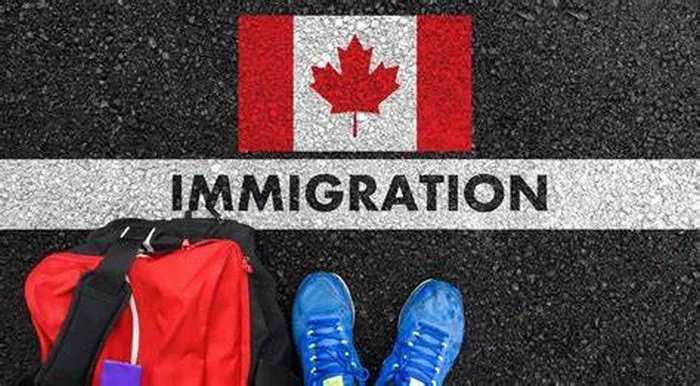Canada, with its diverse culture, robust economy, and high quality of life, stands as an appealing destination for immigrants worldwide. For individuals considering migrating from the United Kingdom to Canada, navigating the immigration pathways can seem daunting. However, with thorough understanding and strategic planning, the transition can be smooth and rewarding. This comprehensive guide outlines the various immigration pathways, application processes, and insights into life in Canada to assist individuals in making informed decisions about their move.
Immigration Pathways
Several immigration programs cater to different circumstances and objectives:
Express Entry: This system manages applications for three federal economic immigration programs: the Federal Skilled Worker Program, Canadian Experience Class, and Federal Skilled Trades Program.
Provincial Nominee Programs (PNPs): Each Canadian province and territory operates its own immigration programs, allowing them to nominate individuals who meet their specific labor market and economic needs.
Family Sponsorship: Canadian citizens and permanent residents can sponsor their family members to immigrate to Canada.
Business Immigration: Designed for individuals with significant managerial or entrepreneurial experience who wish to invest in or establish a business in Canada.
1. Eligibility Criteria for Each Pathway
Each immigration pathway has its own set of eligibility criteria, including age, education, work experience, language proficiency, and adaptability factors such as previous study or work experience in Canada. For example:
Express Entry requires candidates to meet the minimum eligibility requirements for one of the three federal programs, score a certain number of points in the Comprehensive Ranking System, and receive an Invitation to Apply (ITA) for permanent residence.
Provincial Nominee Programs vary by province, with eligibility criteria often linked to the labor market and economic needs of the specific region.
Family sponsorship requires the sponsor to meet certain income thresholds and demonstrate the ability to financially support the sponsored family member.
Business immigration programs typically require a certain level of investment or business experience.
2. Pathway Comparison
Choosing the right immigration pathway depends on individual circumstances, goals, and eligibility. Factors such as occupation, language proficiency, family ties, and willingness to settle in a specific province can influence the decision-making process. Consulting with an immigration expert or utilizing online assessment tools can help applicants determine the most suitable pathway for their situation.
Application Process
1. Step-by-Step Guide
While the application process may vary depending on the chosen immigration pathway, the following general steps apply:
Determine Eligibility: Assess eligibility for the chosen immigration program based on criteria such as age, education, work experience, and language proficiency.
Create an Online Profile: For Express Entry, create an online profile in the Express Entry system and provide accurate information about skills, education, work experience, language ability, and other details.
Receive Invitation to Apply (ITA): Candidates eligible for Express Entry receive an ITA based on their Comprehensive Ranking System (CRS) score. Once received, applicants have a limited time to submit a complete application for permanent residence.
Submit Application: Complete and submit the application form along with all required supporting documents, such as language test results, educational credentials assessment, proof of funds, and police certificates.
Medical Examination and Biometrics: Undergo a medical examination by an approved panel physician and provide biometric information at a designated location.
Wait for Processing: Wait for the application to be processed, which may vary depending on the immigration program and individual circumstances.
Receive Confirmation of Permanent Residence (COPR): Upon approval, receive a Confirmation of Permanent Residence (COPR) and a Permanent Resident Visa (if applicable).
Travel to Canada: Once the COPR is received, travel to Canada before the expiration date to complete the landing process and become a permanent resident.
2. Required Documentation
The documentation required for each immigration pathway typically includes:
Passport or travel document
Language test results (e.g., IELTS, CELPIP, TEF)
Educational credentials assessment
Proof of work experience
Police certificates
Medical examination results
Proof of funds
Relationship documents (for family sponsorship)
3. Processing Times and Fees
Processing times vary depending on the immigration program, the number of applications received, and individual circumstances. Generally, Express Entry applications are processed within six months, while processing times for Provincial Nominee Programs and Family Sponsorship may vary.
Fees also vary depending on the immigration program and the number of family members included in the application. Applicants should budget for application fees, language tests, educational credential assessments, medical examinations, and biometrics.
Life in Canada
1. Cost of Living
The cost of living in Canada varies depending on factors such as location, lifestyle, and family size. Major expenses include housing, transportation, food, healthcare, and education. While cities like Toronto and Vancouver have higher living costs, other cities and rural areas offer more affordable options. Researching the cost of living in different regions can help applicants make informed decisions about where to settle.
2. Job Market and Employment Opportunities
Canada has a strong and diverse economy, with employment opportunities available in various sectors such as healthcare, technology, finance, and skilled trades. Job seekers can explore job boards, recruitment agencies, networking events, and online resources such as the Government of Canada’s Job Bank to find employment opportunities that match their skills and qualifications.
3. Culture and Lifestyle
Canada is known for its multiculturalism, welcoming attitude, and high quality of life. Canadians value diversity, equality, and respect for individual rights. The country offers a wide range of recreational activities, cultural events, and outdoor experiences for residents to enjoy. Embracing Canadian culture and lifestyle can enhance the immigrant experience and facilitate integration into the community.
Conclusion
In conclusion, migrating from the UK to Canada offers exciting opportunities for individuals and families seeking a better quality of life, economic prosperity, and cultural diversity. By understanding the available immigration pathways, navigating the application process, and preparing for life in Canada, aspiring immigrants can embark on a successful journey to their new home.


